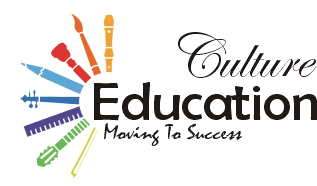
Basic steps of special education that are essential for the future educators

When a child is having trouble in school, it’s important to find out why. The child may be specially abled, which the educator needs to identify to provide help to the children. These young learners can be catered through special education and there are certain steps that cater to the better understanding of this help for the educators of special needs, especially for those who are the learners of the teacher training courses on special educational needs. In this blog, we will have a look at a few such basic steps of special education.
There’s a lot to know about the process by which learners are identified as children with SEN and in need of special education. Through the given steps, we will have a closer look at the big picture of the process, which makes it easier to understand the many details under each step.
- Identification of the child
The identification of the children with special abilities is one of the primary jobs for an educator which needs to be inculcated by the learners of the teacher training courses on special educational needs. When a child is identified as possibly having a disability and as needing special education, his/her parents may be asked for permission to evaluate their child. This not only helps in the prompt identification of the child but also makes the job easier for the educator to chalk out an action plan for education.
- Evaluation
This is an essential early step in the special education process for a child in which answer to these questions is necessary:
- Does the child have a disability that requires the provision of special education and related services?
- What are the child’s specific educational needs?
- What special education services and related services, then, are appropriate for addressing those needs?
The evaluation must assess the child in all areas related to the child’s suspected disability. The evaluation results will be used to decide the child’s eligibility for special education and related services and to make decisions about an appropriate educational program for the child. This helps the overall procedure of child care to become impactful as well as effective for the future special needs educator.
- Decision
A group of qualified professionals and the parents look at the child’s evaluation results. Together, they decide if he/she is a “child with a disability”. This might be a little difficult in the initial stages but once the evaluation is done, it becomes easier for the educator to deliver the course content to the students in the right manner.
- Meeting
It is essential for the institution and the educator to meet the parents of the students with special ability. The following points are needed to be kept in mind while both the educator and the parents meet.
- Contacting the participants, including the parents
- Notifying parents early enough to make sure they have an opportunity to attend
- Schedule the meeting at a time and place agreeable to parents and the educator
- Let the parents know about the purpose, time, and location of the meeting
- Let the parents know about who will be attending
- Let the parents know that they may invite people to the meeting who have knowledge or special expertise about the child
- Education
After the meeting, it is decided whether the child needs special education or not. It is very essential for the educator and the parents to come at a similar conclusion on this point, which helps in the smooth provision of the special education services to the child and cater to his/her development in a better manner. This is why it is important for the learners of the teacher training courses on special educational needs to inculcate the ways of assessing the child and decide on whether he/she is eligible for special education or not.
- Progress
Every teaching-learning procedure is directed towards the development of the students and the special education courses are no different to that. The measurement of progress of the child is one of the main KRA’s of a special needs educator, which helps in the proper assessment of both the child and the kind of progress he/she is making. Hence, it is essential that the future educators, who want to make a mark in the sphere of special education, possess a good idea about the various methodologies of measuring the progress of the children under their tutelage while pursuing the teacher training courses on special educational needs.
The evaluation and education of a child with special disabilities is not an easy task by any means and a person who is looking to become an educator with special needs has to understand that. The aforementioned steps are some of the most important ones that the learners of the teacher training courses on special educational needs should inculcate so that they can deliver the right kind of education and cater to the growth of the children with special abilities when they start their career in the field of education.


